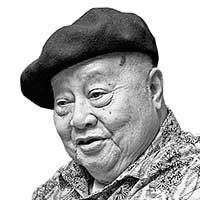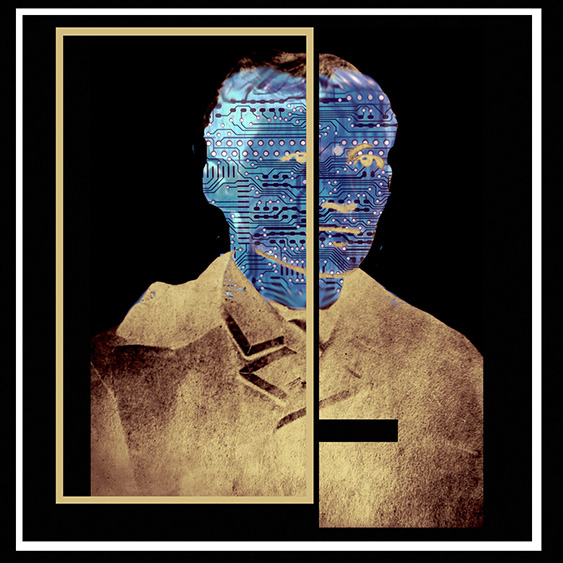Our heroic heritage

Rizal a revolutionary? This is most evident in the totality of his short life, in his two novels which affirmed his faith as well as his death warrant. He may have denied that faith orally in his desire to live but he cannot deny or alter the deepest truth expressed in his novels, his revolutionary creed.
At the behest of Senator Loren Legarda who is championing the folk arts and a cultural renewal, Prof. Eric Zerrudo of the University of Santo Tomas lectured last week at the National Museum on “Our National Heritage Makakain ba?” (Can we eat it?). The question is important because it reduces those high and ghostly ideas to the comprehension level of the common man. What does heritage mean in my humdrum existence, in my search for food?
Eric is now drawing a cultural map of the country, an effort which is necessary but most probably not fully understood by the bureaucrats who control the purse strings and the businessmen busy tearing down old buildings and erecting shopping malls to replace them.
They are doing this in the name of progress, globalization, and whatever expediency that cannot be stopped. This is the ancient tension between tradition and modernity as continually experienced and contested by societies in transition.
Take all these new scientific discoveries, the new information technologies. An old cartoon in the New Yorker magazine shows two monks in a medieval monastery one is holding a book and the other an unfurled scroll. The monk holding the scroll tells the monk with a book, “That is just one of those new fads. It will pass.”
Of course, the book did not pass. It multiplied, hastened the spread of knowledge. Of course, the iPad, the laptop will not pass. Like the book, these devices also hasten the spread of information, knowledge and make so many difficult chores easier. And we all know that if government records are computerized, government service itself will be more efficient and, hopefully, less corrupt.
Professor Zerrudo included so many intangibles in his list of heritage objects not just ancient rotting buildings, etc., which we often associate with heritage. History, ideas, customs, habits these devices all form our patrimony and some are even secret.
Take for instance the arcane oraciones of the folk. I inherited one from a wrinkled sacristan, an oracion against malevolent dogs. Our barrio had one a vicious mongrel everyone avoided. The dog would be quiet and still when I passed it, but only if I pronounced the oracion before it could see me. The old acolyte said I could bequeath it on to only one person for after he had given it to me, for him it had lost its potency.
Professor Zerrudo showed a frame of Tugaya in Lanao. I visited this small town on the shores of Lake Lanao in the Fifties. It was there, too, that I witnessed the natives dance the singkil. Even then, I marveled at the grace and dexterity of the dancers and concluded that many of our folk dances can be the inspiration for our modern choreographers.
Our history is instructive. The Portuguese preceded the Spaniards in the early 16th century when they first sailed to Sulu. Much to their surprise, they found the native boats better than theirs, the canon forged in the Moro foundries bigger than theirs. The Moro skills in metal work were still evident when I visited Jolo in the Fifties. Those beautifully crafted bladed weapons they wavy kris, the razor sharp barong with mother-of-pearl handles, they are no more.
The experience of the National Artist, Abdulmari Imao, who died last week is also instructive and could be exemplar, to be emulated by every creative Filipino cultural worker. History again it decreed that much of our art particularly the contemporary is derivative of the west. Deeply rooted in his tradition, Imao gave our art a Filipino face. This is his indelible legacy to us.
Tension always exists between tradition and modernity. When must tradition be sacrificed for modernity? For progress? This tension is best illustrated by the recent Chinese experience when they displaced millions of their people and submerged many towns, their cemeteries included, in the vast reservoir made by the gigantic Three Gorges dam across the Yangtze. This was replicated earlier when a dam was also built on the Chico river in Northern Luzon, much to the violent objection of the natives there. Such tension which often ends in strife can be avoided if justice is given to those who will be displaced. It is a rule in culture change that anything of value which is lost must be replaced by something of equal value.
I was unable to stay till the end of the lecture. I do not know if Professor Zerrudo made some conclusions parallel to mine. I would have added that cultural mapping should be encouraged. It is not new; in the Sixties, Fr. Rodrigo Perez III a magnificent cultural worker in his own right urged all Filipino communities to write their histories. The effort was not continued. Cultural mapping evokes a sense of place and eventual pride in our heritage. Hopefully, we will then be better Filipinos.
The ultimate purpose of such endeavor is not necessarily the building of a strong and progressive nation but to create a just society, exhorting as I always do that truth is justice in action or it is not truth at all.

I would have reminded the select audience of writers and cultural workers, too, that our heritage includes our revolutionary tradition, immanent, throbbing and alive to this very day.
Again, it is history wherein this tradition is deeply rooted. Although we have always been divided as a people, we always fought our oppressors, foreign and domestic. During the Spanish regime peasant revolts of varying ferocity erupted everywhere, the basi revolt in the Ilokos and yet again, Diego Silang’s rebellion continued by his wife, Gabriela, when he was executed by the Spaniards. Armed struggle flared during the American regime against the Establishment and the Ilustrado landlords. The rebels, often isolated and few, were labeled by the Americans as bandits Sakay, for instance. Some were led by quasi-religious leaders like Pedro Calosa of the Colorum uprising in Tayug, Pangasinan in 1931, and soon after, the Sakdal nationalist rebellion in 1935 in Central Luzon led by Benigno Ramos. Then the Huk rebellion in 1949-53, broader in scope and motivated by agrarian discontent, and to this very day, the New People’s Army rebellion communist inspired and emasculated by factional divide. Its stragglers have lost their ideological moorings although the compulsion to revolution still exists in the objective reality of the country today the obscene irresponsibility of the very rich and their continuing manipulation of the political system.
Obviously, the Marxist idea of a class struggle still has currency but is not always articulated as such primarily because it is identified with a discredited communism. This idea is still valid but through the years I have realized that not all of our very rich are beyond redemption. Likewise, some Filipino liberals and even conservatives have been radicalized although they may not be consciously aware of their radicalization.
I bring to mind thinking individuals like Boo Chanco who writes for this paper. Last week he decried the notion that it is all right for the rich to work in government. He fulminated against the oligarchy in a manner that I thoroughly approve of. To repeat this oligarchy colonized this country and grabbed all the major economic opportunities. It is not motivated by values such as those which guide the impulse of many American capitalists. This oligarchy is not innovative or modernizing. It is thoroughly lacking in social responsibility. It proclaims loudly that it espouses responsibility (CSR) but if its philanthropy is quantified, it is merely tokenism compared to its massive loot, much of which is already stashed abroad. Boo Chanco is right; the logic of business is profit, the logic of government is service.
In reviewing such radical ideas like class war, it is necessary to look at colonialism and the nature of our native elites. To protect their interests, they collaborated with the colonialists, the Spaniards, Americans and Japanese.
But there are notable exceptions, some of them outstanding in their sacrifices. I bring to mind Jose Rizal. Unlike Apolinario Mabini who was very poor but like Mabini, too, he gave so much of himself, his very life to this nation.
Rizal’s family was wealthy for which reason he was able to study in Europe like several well-bred young men of his time. He had status; he could converse with the Archbishop of Manila, with the Governor General. But he believed in justice for the common man for, above all, he was a revolutionary. Some Filipinos with leftist persuasion will deny this definition of Rizal; they will cite as evidence some of his public statements particularly those that seem to oppose revolution and appease the Spanish rulers. They believe it is Andres Bonifacio, the founder of the revolutionary Katipunan, who should have been anointed National Hero. It is not necessary to do this; both have their hallowed niches in our history.
Rizal a revolutionary? This is most evident in the totality of his short life, in his two novels which affirmed his faith as well as his death warrant. He may have denied that faith orally in his desire to live but he cannot deny or alter the deepest truth expressed in his novels, his revolutionary creed.
Had he been an ordinary man without lineage and intellect, the Spaniards would have killed him outright when he returned from Europe. Yes, he returned and that was more than courage it was iron commitment to the motherland. He could have stayed abroad in Germany where he had friends; he could have lived comfortably in Hong Kong where he alredy had a good medical practice. In both places, the hand of the enemy couldn’t reach him.
It is from Rizal that we inherit our heroic heritage, from Mabini and Bonifacio, too, and from all the youth who died fighting the Spaniards, the Americans, the Japanese and of late, Marcos and his thugs.
Rizal’s monument adorns every town plaza today an omnipresent fixture like old furniture and as such, alas, he is merged with the landscape and taken for granted, a worn-out cliché in the pronouncements of politicians.
When we mark his martyrdom on the 30th of this month, I hope we will not annihilate his memory with our apathy and ignorance. Let us resurrect him instead in our minds and hearts and live his heritage.



















